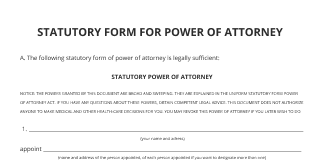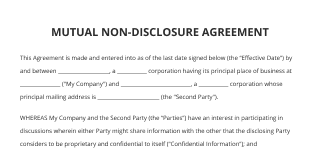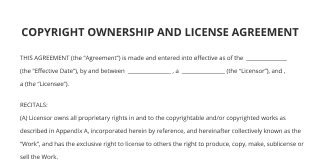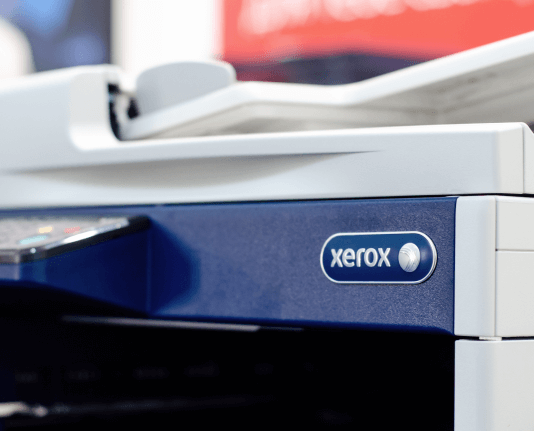Understanding Tax Invoice Vs Receipt for Your Business Needs
Move your business forward with the airSlate SignNow eSignature solution
Add your legally binding signature
Integrate via API
Send conditional documents
Share documents via an invite link
Save time with reusable templates
Improve team collaboration
See airSlate SignNow eSignatures in action
Understanding tax invoices
A tax invoice is a formal document issued by a seller to a buyer, detailing the sale of goods or services. It includes important information such as the seller's and buyer's details, a description of the goods or services, the total amount charged, and the applicable tax. In the United States, tax invoices are often used in business transactions to ensure compliance with tax regulations.
Tax invoices are essential for businesses that need to track sales and report taxes accurately. They serve as proof of a transaction and can be used for tax deductions and audits. When preparing a tax invoice, it is crucial to include all necessary details to avoid any potential issues with tax authorities.
Defining receipts
A receipt is a document provided by a seller to a buyer as proof of payment for goods or services. Unlike a tax invoice, a receipt does not typically include detailed tax information and is often simpler in format. Receipts usually contain the date of the transaction, the amount paid, and a brief description of the purchased items.
Receipts are commonly used by consumers for personal record-keeping and can be essential for returns or exchanges. For businesses, receipts help track expenses and can be used for accounting purposes. When creating a receipt, it is important to ensure that it accurately reflects the transaction to maintain clear records.
Key differences between tax invoices and receipts
While both tax invoices and receipts serve as proof of transactions, they differ in several key aspects:
- Purpose: Tax invoices are primarily used for business transactions and tax reporting, while receipts are more common for consumer purchases.
- Detail Level: Tax invoices include comprehensive details about the transaction, including tax amounts, whereas receipts are generally simpler.
- Legal Requirements: In some jurisdictions, businesses are required to issue tax invoices for certain transactions, while receipts may not have such requirements.
- Usage: Tax invoices are often used for accounting and tax purposes, while receipts are used for personal record-keeping and expense tracking.
When to use a tax invoice
Tax invoices are typically used in business-to-business transactions or when a business sells goods or services to another business. They are essential for maintaining accurate financial records and ensuring compliance with tax regulations. Businesses should issue a tax invoice when:
- They are required to charge sales tax on the transaction.
- The transaction amount exceeds a certain threshold set by state tax laws.
- The buyer requests a tax invoice for their records.
When to use a receipt
Receipts are commonly used in everyday consumer transactions and are suitable for various situations. They should be issued when:
- A customer makes a purchase in a retail setting.
- Payment is received for services rendered without the need for detailed tax reporting.
- A buyer requires proof of payment for returns or exchanges.
Creating tax invoices and receipts digitally
Using digital tools, such as airSlate SignNow, can streamline the process of creating and managing tax invoices and receipts. Users can easily prepare and send documents for eSigning, ensuring secure and efficient transactions. Features like customizable templates allow businesses to create professional-looking invoices and receipts quickly, while electronic storage helps maintain organized records.
Digital document workflows enhance productivity by enabling users to edit, merge, and share documents seamlessly. This approach reduces the risk of errors and ensures compliance with legal requirements, making it easier for businesses to manage their financial documentation effectively.
airSlate SignNow solutions for better efficiency
Our user reviews speak for themselves






Why choose airSlate SignNow
-
Free 7-day trial. Choose the plan you need and try it risk-free.
-
Honest pricing for full-featured plans. airSlate SignNow offers subscription plans with no overages or hidden fees at renewal.
-
Enterprise-grade security. airSlate SignNow helps you comply with global security standards.

Grasping tax invoice versus receipt
When overseeing business finances, it's vital to comprehend the distinctions between a tax invoice and a receipt. Both records fulfill unique functions in bookkeeping and tax documentation. This guide will lead you through the advantages of utilizing airSlate SignNow for your document signing requirements, ensuring you can effectively handle your invoices and receipts.
Procedure to use airSlate SignNow for tax invoice versus receipt
- Launch your web browser and go to the airSlate SignNow homepage.
- Establish a free trial account or log into your current account.
- Select the document you want to sign or send for signatures and upload it.
- If you intend to reuse this document, save it as a template for future reference.
- Access your uploaded document and make any necessary modifications, such as adding fillable fields or inserting specific details.
- Sign the document and assign signature fields for your recipients.
- Click 'Continue' to set up and send an eSignature invitation.
airSlate SignNow provides a comprehensive solution for businesses aiming to optimize their document signing procedure. With a rich array of features that ensures a great return on investment, it is built to be user-friendly and scalable, making it perfect for small to medium-sized enterprises. Moreover, airSlate SignNow offers clear pricing with no hidden charges and delivers excellent 24/7 support for all paid plans.
In summary, utilizing airSlate SignNow can remarkably improve your document management efficiency. Start your free trial today and witness the advantages firsthand!
How it works
airSlate SignNow features that users love
Get legally-binding signatures now!
FAQs
-
Is an invoice the same as a receipt?
An invoice serves as a formal request for payment, detailing the costs and terms of goods or services before the transaction. Meanwhile, a receipt is issued post-payment, confirming that the payment has been received and provides a summary of the completed transaction. -
Can an invoice be used as a receipt?
Can an invoice ever be used as a receipt? Since an invoice is a request for payment, not proof of payment, you shouldn't use an invoice in place of a receipt. Once a customer or client pays your invoice, make sure to provide a separate receipt. -
What is the difference between e receipt and tax invoice?
– E-invoices are used for legal, accounting, and tax-related purposes. – E-receipts confirm that a payment has been received but lack the detailed information found in an invoice. – E-invoices include customer details, transaction items, taxes, and payment terms. -
Is a tax invoice the same as an official receipt?
Understanding the differences between invoices and receipts is vital for maintaining accurate financial records, ensuring tax compliance, and enhancing customer relationships. Invoices request payment for services or goods, while receipts confirm that payment has been made. -
Are official receipt and invoice the same?
Invoices and receipts have different purposes as they're issued at different stages of the sales process. Invoices are issued prior to the customer sending the payment, whereas a receipt is issued after the payment has been received. The invoice acts as a request for payment, and the receipt acts as a proof of payment. -
What is the difference between a VAT receipt and a tax invoice?
VAT receipts are normally issued after payment, whereas invoices are typically issued before payment. VAT receipts contain specific VAT information, such as the VAT registration number and the VAT amount charged, whereas invoices focus on the products or services given and the payment terms. -
What's the difference between a tax invoice and a receipt?
An invoice is intended to be a request for payment and includes the price and quantity of items, along with other information. A receipt is proof of purchase. It indicates that a payment was made and finalised.
What active users are saying — tax invoice vs receipt
Related searches to Understanding tax invoice vs receipt for your business needs
Get more for tax invoice vs receipt
Find out other tax invoice vs receipt
- Seamlessly handle PDF signing on MacBook Air
- Easily apply electronic signature in PDF documents with ...
- Unlock seamless PDF digital signing with DSC for your ...
- Sign your Mac PDF documents effortlessly with airSlate ...
- Effortlessly manage signature in Outlook with airSlate ...
- Simplify your Mac online document signature process ...
- Learn how to add a digital signature to an already ...
- Securely streamline your documents with a reliable PDF ...
- Streamline your PDF digital signing with a digital ...
- Unlock seamless document signing with Mac free PDF ...
- Sign your Gmail PDF document signature effortlessly ...
- Create digital signature for PDF on iPhone with ease
- Discover the best PDF sign tool Android for effortless ...
- Easily add a PDF signature on Chromebook with airSlate ...
- Experience seamless PDF form e-signature with airSlate ...
- Master PDF signature Mac how-to with airSlate SignNow
- Effortless Mac electronic document signing for your ...
- Secure Mac document electronic signature made easy
- Secure your documents with our PDF online signing ...
- Sign documents with Mac PDF signature free






























